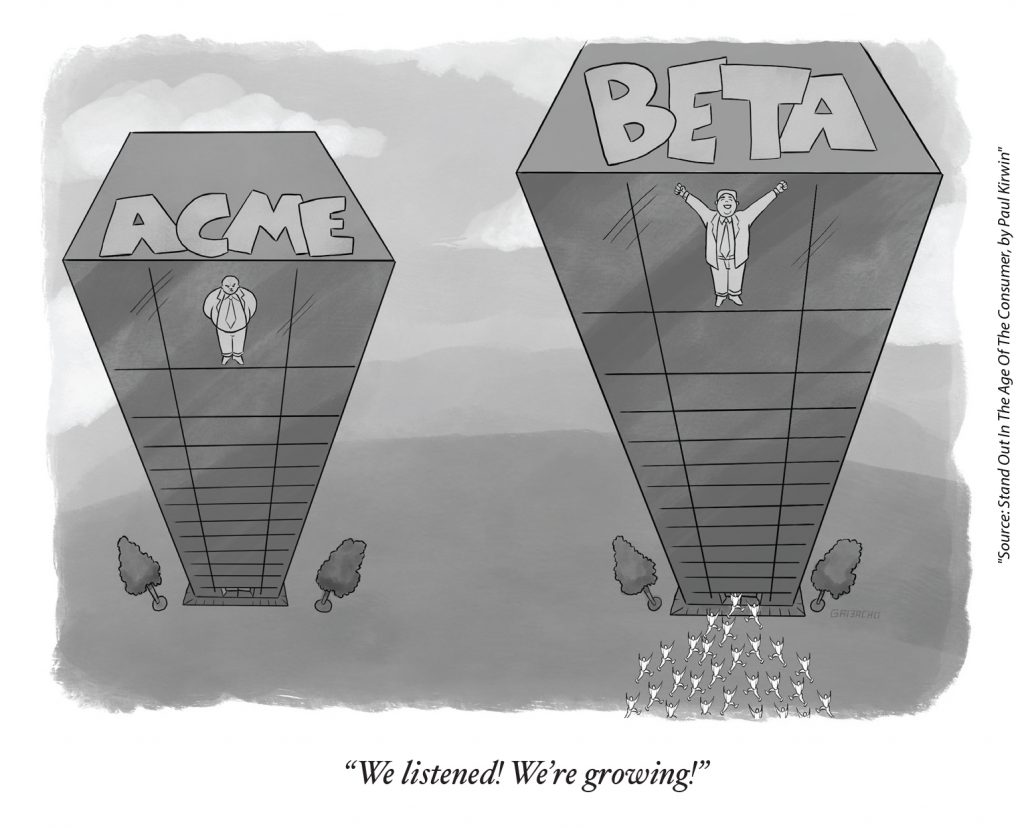
For product-focused marketers, designers and developers, it can be easy to get caught up in our own metrics. Looking at survey data, focus group results, internal analytics, customer service and warranty tickets can help us assess how we’re doing with our own customers.
But how do our customers’ opinions compare to the competition’s?
That really is the pivotal question when it comes to our product’s performance in today’s marketplace. The retail world is becoming more brand agnostic and consumers are increasingly ignoring top-down marketing messages from brands. Instead, consumers rely on word of mouth from people who’ve had real world experiences with the product. That’s the true competitive benchmarking metric of any two products.
20 Competitive Product Benchmarking Questions
How does my product fare for these key attributes when benchmarked with my competitor’s product?
- Appearance — color, design, aesthetics, etc.
- Comfort — cushioning, softness, discomfort, etc.
- Size/Fit — big, small, tight, loose, blisters, rubbing, etc.
- Quality — durability, defects, etc.
- Functionality — performance, meets expectations, etc.
- Materials — weight, feel, toughness, softness, etc.
- Set Up — difficulty, clarity of instructions, etc.
- Price — worth the money, too high, cheap, etc.
- Features — specific to your product, i.e. battery life, insulation, traction, sound, etc.
- Components — specific to your product, i.e. handle, seal, tags, pockets, zippers, parts, etc.
- Uses — specific to your product, i.e. walking, running, commuting, household, gifting, etc.
- Counterfeiting — clues around fake or knockoff product in the marketplace, etc.
- Delivery — speed, shipping, packaging, damages, etc.
- Customer Service — returns, refunds, warranties, responsiveness, etc.
- Brand Mentions — mentions of my brand and my competitor’s brand
- Marketing Messaging — are my campaigns hitting home with consumers compared to my competition?
- Reseller Issues — are resellers of my product living up to regulations and expectations compared to my competition?
- Expectations — are there expectations (real or perceived) that were met or not met?
- Sustainability — do customers care about use of renewable resources, sustainable manufacturing and other environmental efforts?
- Added Benefits — additional or bonus features that exceeded original expectations.
Customers Have Already Answered These Questions for You
In your quest to answer these questions, you may be surprised to learn that big VoC budgets need not be allocated. In fact, those efforts wouldn’t get you to the right answers about your competitor’s product. The good news is, these opinions have already been published by customers via product reviews. They are scattered across the web on sites like Amazon, Best Buy, Home Depot and Zappos. You just need to employ a tool that helps you aggregate and analyze them to easily get the competitive product benchmarking answers you seek.
